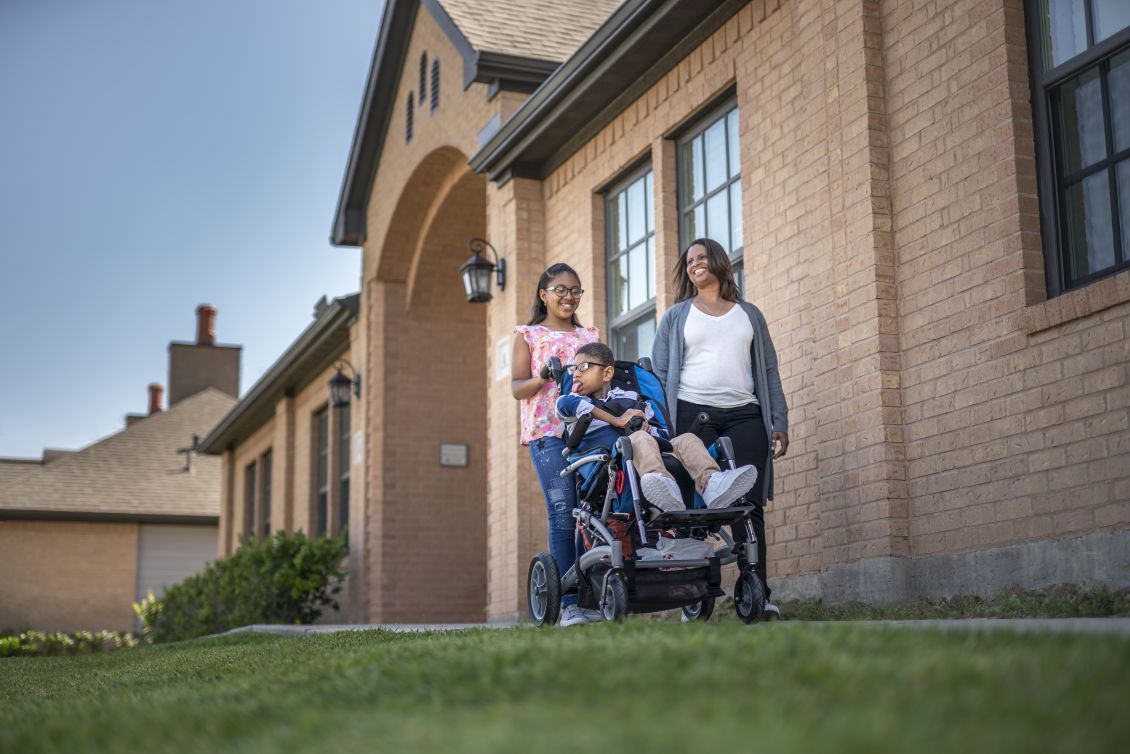This piece is part of our blog post series, Policy Actions for Racial Equity (PARE), which explores the many ways housing policies contribute to racial disparities in our country.
In the past year, homes throughout the country have served as board rooms, daycares, classrooms, restaurants, dance studios, and therapist’s offices. A global pandemic grounded business travel and vacations became “staycations” for many Americans. Governors issued stay at home orders and public health departments provided guidance indicating we’d all be safer at home.
What Happens When Home Is Not a Place of Stability and Safety?
Now - at a time when stable shelter is critical—spiking unemployment and economic hardship have increased housing insecurity among America’s renting families and 40 million people are at risk of losing their homes. Housing instability, like so many other disproportionate outcomes, reflect harsh, longstanding inequities. A team of Princeton University researchers at the Eviction Lab utilized historical eviction data (2012-2016) to demonstrate that landlords file for eviction against Black and Latinx renters at higher rates than against white renters.
Data from the Census Bureau’s Household Pulse Survey, a nationwide survey measuring household experiences during the pandemic, indicate that nearly 10 million were behind on rent payments at the end of February. The pandemic has laid bare structural racism in education, employment, housing, and health care. According to preliminary analysis conducted by the Eviction Lab, since the pandemic began households led by Black, Indigenous and other people of color (BIPOC), and especially Black and Latinx women, are losing their housing at higher rates than white households. These BIPOC individuals and families are experiencing the stress of losing their housing, as well as the many other things our homes have become over the last year.
The Powerful Combination of Rent Assistance and Eviction Moratoria
Given the number of renters who currently owe back rent and are at risk of being evicted due to the pandemic, strategies need to be implemented quickly. For most people, evictions can be mitigated with short- or medium-term help paying their rent. In the last two Covid-19 relief bills, Congress has approved more than $50 billion for rental assistance; however state and local governments are just beginning to take applications and work still needs to be done to ensure assistance reaches those who are most at risk.
According to Peter Hepburn, a researcher with the Eviction Lab, “Rental assistance is critical in ensuring that households that have been protected by eviction moratoria are able to remain in their homes. Unfortunately, the allocation strategy employed by Congress didn’t target aid based on renter population or demonstrated need. The result is that larger statezs with more renters and more people of color will have less aid available, potentially exacerbating existing racial disparities in housing stability.”
Meanwhile, the recent extension of the CDC eviction moratorium was a necessary step to mitigate the impact of the pandemic and housing crisis for BIPOC-led households. “The COVID-19 pandemic has presented a historic threat to the nation’s public health,” CDC director Dr. Rochelle Walensky said in a statement on the moratorium extension. “Keeping people in their homes and out of crowded or congregate settings — like homeless shelters — by preventing evictions is a key step in helping to stop the spread of COVID-19.”
For Renters of Color, Eviction Is Only the Beginning
Eviction alone is a traumatic experience. People who live through them not only lose the safety and protection a home can provide, but they also experience a host of negative implications for long-term health and well-being. And the negative impacts are not faced equally; for millions of households of color, the CDC eviction moratorium and newly available rental assistance may be the only thing standing between them and homelessness.
People of color already face homelessness at disproportionate rates. For instance, Black people make up 39.8 percent of the homeless population in the U.S. but are only 13.4 percent of the overall population. The compounding impact of historic and present-day racism in housing and economic policies put BIPOC-led renter households at the greatest risk for homelessness resulting from eviction.
It’s Really Not Too Late
While people of color face a greater risk of eviction and cascading negative impacts, including homelessness, these outcomes are not inevitable. Anti-racist policy making focused in the short term on the adequate and equitable allocation of rent and legal assistance can mean BIPOC-led households avoid the disruption of an unplanned move, including the associated financial and psychological strain.
In the longer term permanent affordable housing connected to opportunity and a recommitment to a full implementation and enforcement of the Fair Housing Act can begin to shift the racist legacy of housing in the United States to a future state where the color of our skin does not determine if we have a safe and affordable place to live. Every one of us can take steps to disrupt the harmful cycle from housing instability to eviction and homelessness. Learn more about the issue by exploring The Eviction Lab, or Richard Rothstein’s book, The Color of Law. You can also encourage your state and local public officials to ensure that rental assistance is equitably distributed to keep BIPOC renters in their homes. Or support a local BIPOC-led organization that is helping their community maintain housing.
We encourage all who believe in creating a just society to read, discuss, and share the PARE blog series as we learn and act to address the impacts of housing policies on racial equity in America. We also invite you to join us in this conversation, by suggesting additional topics and sharing resources for how we can advocate for greater racial equity. If you’d like to offer feedback on our body of work, please reach out to the Public Policy team. You can also check out our blog and subscribe to our daily and bi-weekly policy newsletters for more information on Enterprise’s federal, state, and local policy advocacy and racial equity work.
